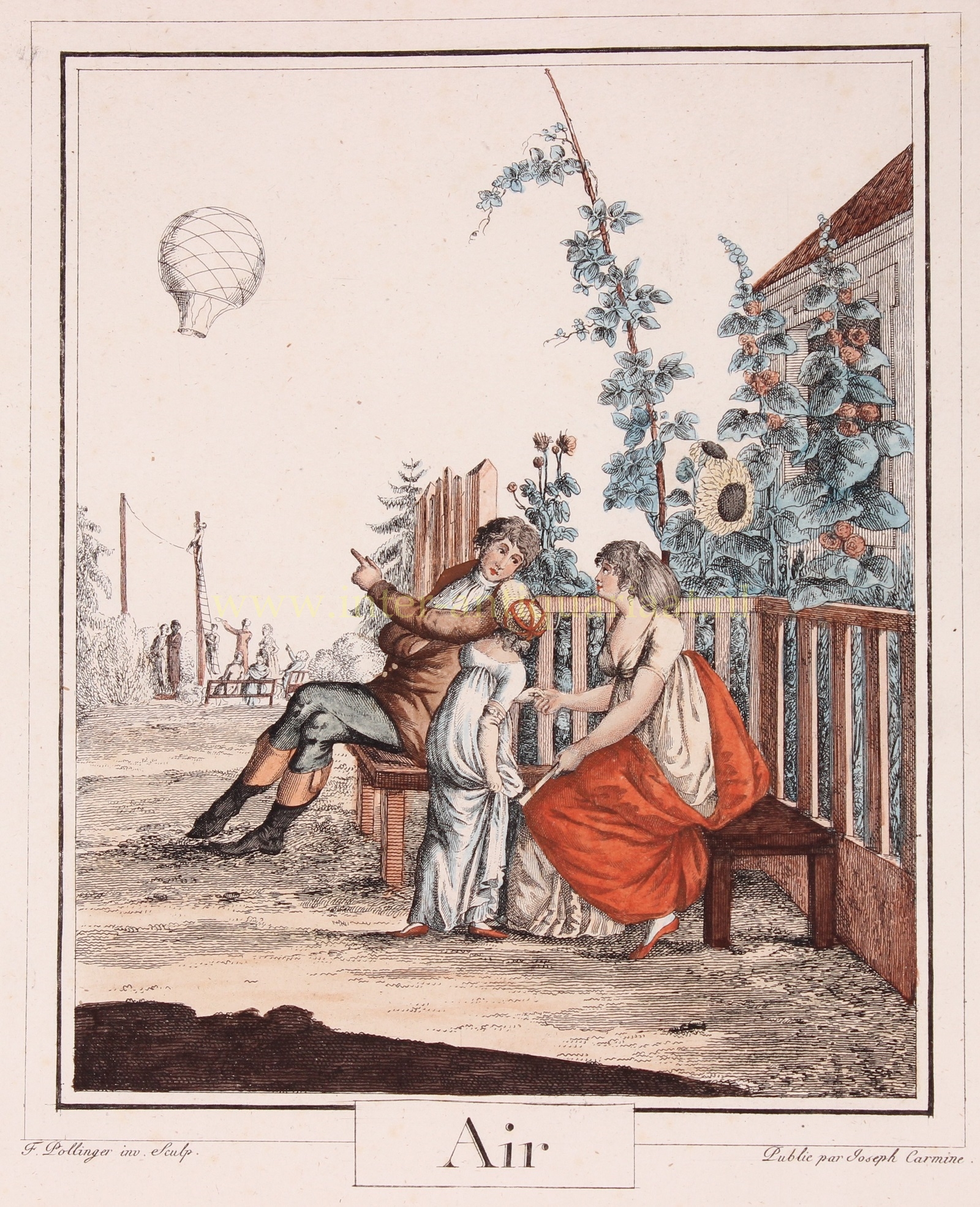Hot air ballooning – F. Pollinger + Joseph Carmine, ca. 1783
THE TALK OF THE DAY: HOT AIR BALLOONING
“Air“, copper engraving made by F. Pollinger and published by Joseph Carmine (1749-after 1822) in Augsburg around 1783. With original hand colouring. Size: 23.5 x 18.8 cm.
This print was part of a series representing the four elements. To depict the element of air, a prototype hot air balloon illustrates the scene. The hot air balloon was a groundbreaking invention at the end of the eighteenth century. The Montgolfier brothers were the first to create a balloon-like structure and make it ascend using hot air.
At the beginning of 1783, the Montgolfiers had made enough progress in their research to take the next step. In early June of that year, they conducted a demonstration in their hometown of Annonay (France), featuring a larger balloon. This nine-meter diameter balloon was made of silk, was held together by two thousand buttons, and lined with fireproofed paper. The unmanned balloon ascended to a height of presumably two kilometers and landed about eight hundred meters away.
Later that year, live animals were sent up in the balloon for the first time – a sheep, a duck, and a rooster. At that point, no one knew how the altitude would affect the human body. When the animals emerged unharmed, a flight with human passengers was undertaken. This was done in front of the Palace of Versailles in the presence of King Louis XVI and his wife Marie-Antoinette.
The hot air balloon was perhaps the most talked-about mode of transportation in Europe at the end of the eighteenth century. It captivated people’s imaginations, including the creator of this engraving, who incorporated the hot air balloon into an allegory for “air.”
Price: SOLD


